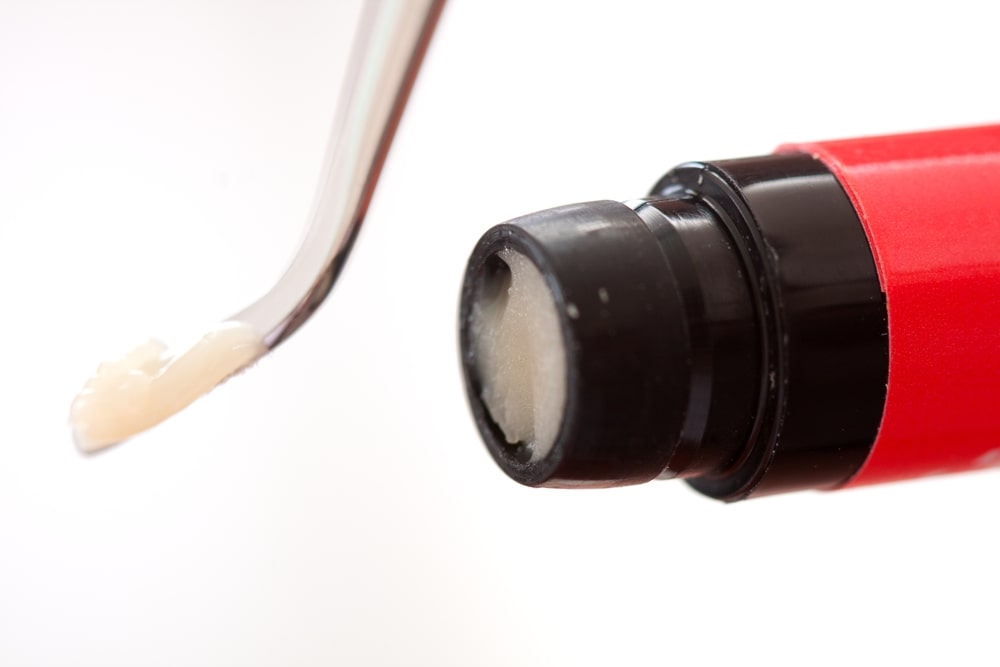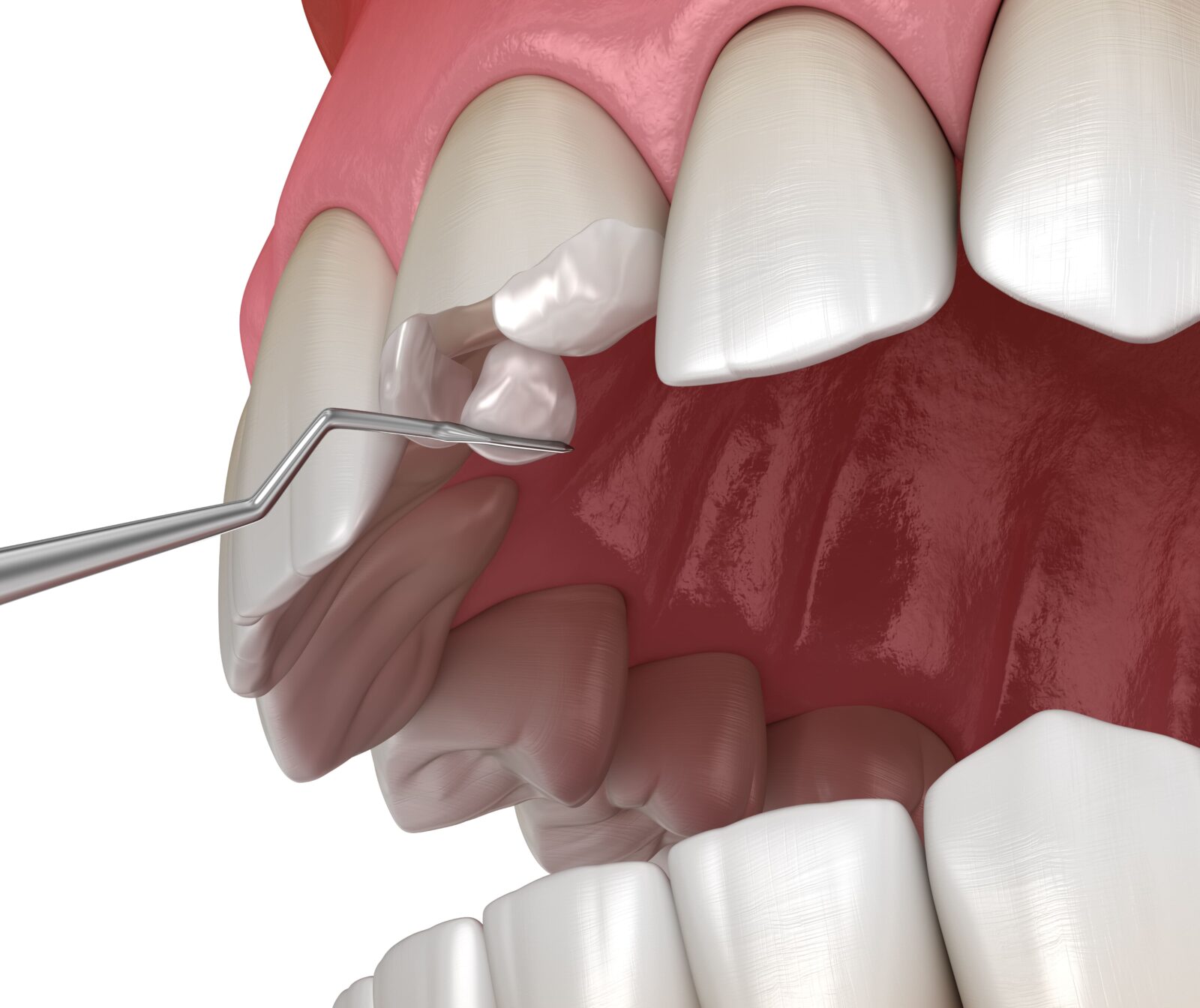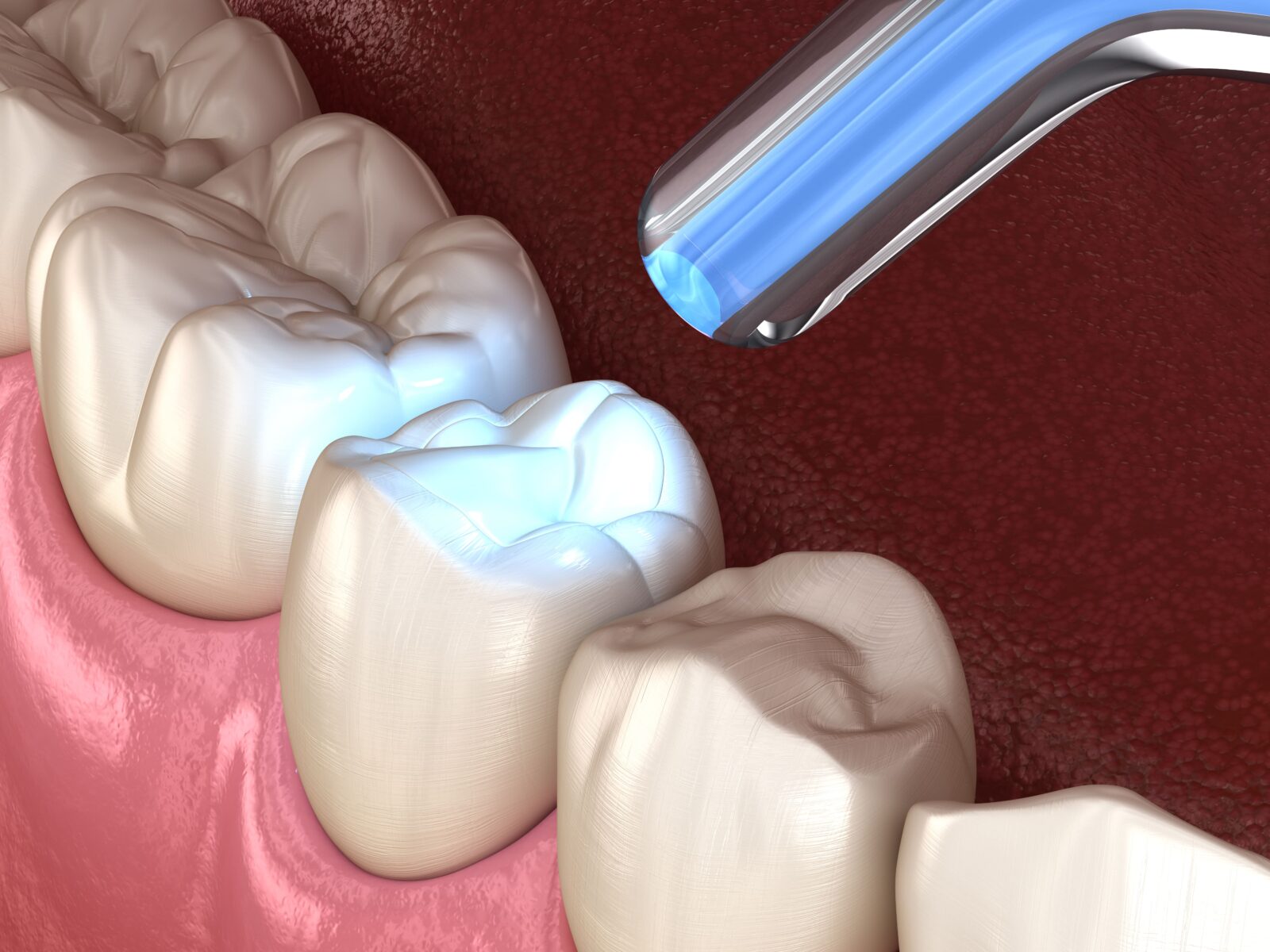Composite resin is a dental material that has been used in dentistry for more than 40 years. It is an alternative to amalgam, which contains mercury and other metals that can damage or stain tissue when it’s placed in the mouth. Composite resin is able to offer many benefits over amalgam because of its ability to be shaped and contoured into any desired form. As a result, composite resin is now one of the most commonly used dental materials. In this blog, we will look deeper at composite resin, how it is used in dentistry, and its many benefits.
What is Composite Resin?

Composite resin is a dental cement made up of synthetic resins. Synthetic resins are resins produced in a laboratory that are designed with a viscous consistency that hardens when cured with a light that uses a blue wavelength of 470 nm. In addition to synthetic resins, composite resin also contains fillers such as glass or ceramics. Glass fillers can include crystalline silica, silicone dioxide, lithium/barium-aluminum glass, or borosilicate glass. Ceramic fillers can include zirconia-silica or zirconium-oxide. These fillers provide the mixture with strength, translucency, a natural color, and wear resistance.
How Composite Resin is Used in Dentistry

As mentioned before, composite resin is one of the most commonly used dental materials. This is partially due to the fact that composite resin is a versatile dental material that can be used for a variety of restorative and cosmetic dental procedures. Your dentist may use composite resin for:
- Composite Fillings: composite resin is often used to fill small to medium areas of tooth decay
- Composite Bonding: composite resin can also be used to repair minor chips or cracks with composite bonding treatments
- Composite Veneers: composite resin can be used to fabricate ultra-thin veneers in order to improve the size, shape, or color of your teeth
- Filling in gaps between the teeth
Benefits of Composite Resin
Composite resin is a dental material that has many uses and advantages. It can be used to restore teeth, fill in missing tooth structure, or even replace old metal fillings. The benefits of composite resin are numerous and include:
Provides a natural look and feel
Composite resin is able to mimic the look and feel of natural tooth structure. Because composite resin may be custom-made to match your teeth’s exact color, the repaired area will blend in with the rest of your natural tooth structure. In fact, composite fillings are sometimes known as white fillings or tooth-colored fillings because they can be color-matched. Not only that, but composite resin can be molded to match the natural shape of your teeth and fill in gaps between teeth. Because the material is both durable and flexible, it can be used to repair chips or cracks without compromising your tooth structure.
Strengthens Natural Tooth Structure
Composite fillings strengthen teeth by bonding directly to the tooth. The discovery of acid etching, which creates small dips in teeth, allows for better bonding. Composite resin also has a higher bond strength to both enamel and dentin than that of amalgam or amalgam-metal fillings. This makes it an effective dental material for repairing teeth.
Less Drilling
Most people don’t actually dislike going to the dentist, they just don’t like the dental drill. However, when composite resin is used, there is less drilling involved. This is because composite resins are essentially glued to the tooth and do not require a dentist to drill away healthy tooth to make features that keep it in place like amalgam fillings. As a result, less preparation is required, which means less drilling is needed.
No Corrosion
Older amalgam fillings are prone to corroding. Although newer amalgam fillings are less likely to corrode, they can still corrode over time. Corrosion can cause staining in the tooth and surrounding gum tissue. Since composite resin is completely free of metals, there is no risk of corrosion.
Conservative Restoration Option
In some cases, composite resin can be used to save a tooth that would otherwise need to be extracted. For example, when a tooth has a significant amount of decay that has weakened its structure, composite resin can provide additional support to the tooth by bonding with the natural structure. Composite resin can also be used as an alternative to dental crowns for the same reason. While it will depend on the size and location of the decayed area, composite resin may be able to prevent the need for more invasive dental treatments.

Easy to Repair
Another benefit of composite resin is the fact that it can be easily repaired in the case that it becomes damaged. Oftentimes, when a dental restoration becomes damaged, the entire restoration must be removed and replaced entirely. This can be costly and inconvenient. With composite restorations, however, damage can usually be fixed by adding more composite to the damaged area.
Quick Placement
Unlike other types of aesthetic dental restorations, like crowns or veneers, composite resin restorations can be placed during a single dental appointment. This is because they are considered direct restorations and do not require the use of a dental laboratory for fabrication. Instead, the composite resin material is placed, shaped, and hardened during one visit. In addition to having your restoration completed when you leave your dentist’s office, you will also not need to deal with wearing a temporary restoration.
Can Reduce Tooth Sensitivity
Tooth sensitivity is an uncomfortable and often painful sensation that can occur when stimuli enters the tooth and aggravates the tooth’s nerve. Although this may be a sign of decay, some cases of tooth sensitivity occur simply because the enamel is worn or thin. In these cases, composite resin can be applied to the tooth as a way to build up the enamel and protect the inside of the tooth. Since the composite resin acts like a shield, it can help to decrease tooth sensitivity.
In Conclusion:
Composite resin is a dental material made up of synthetic resins and glass or ceramic fillers. This commonly used dental material is used for composite fillings, composite bonding, composite veneers, and to fill in gaps between the teeth. The reason for its popularity is due to its numerous benefits listed above. If you’re looking for a way to help your oral health while also improving the look of your smile, composite resin may be able to help you accomplish that.
